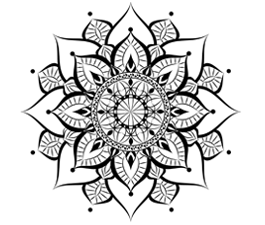In the last blog on #benefits of yoga, I outlined some of the numerous physical #benefits of #yoga practice. This one deals with #Pranayama or the #breath awareness or #breath #control.
Although I have been practising yoga for over 20 years, it’s only in the last three that I really found my #breath. Which is weird – because if I wasn’t #breathing, I would have been dead. Well, there’s breathing and there’s breathing properly.
Prana in Sanskrit means ‘vital energy’ or ‘life force’. Prana is the force that exist in all things. It is more than air that we breath. Pranayama is therefore explained as breathing exercises aimed at introducing extra oxygen into the lungs – which in everyday western terms means breathing properly and deeper. ‘yana’ means control. But in #pranayama the word ‘#ayama’ is used which means ‘extension’ or ‘#expansion’. Therefore, the yogic breathing techniques or pranayama are used to extend the life force and go: ‘beyond one’s normal boundaries or limitations and attain a higher state of vibratory energy and awareness’ (#Asana Pranayama Mudra Bandha; Swami Satyananda Saraswati, #Bihar School of Yoga)
Yoga helps with accessing your breath – with pranayama the lung function will be improved. A 1998 study published in The Lancet taught a #yogic technique known as “complete breathing” to people with #lung #problems due to #congestive #heart #failure. After one month, their average respiratory rate decreased from 13.4 breaths per minute to 7.6. Meanwhile, their exercise capacity increased significantly, as did the oxygen saturation of their blood.
Human beings breathe about 15 times per minute. Most people breath incorrectly, using only a small part of their lung capacity which makes the breathing shallow and deprives the body of oxygen. Anxiety and stress make this worse. It even makes it shallower thus resulting in #panic attacks. In children (and adults) on autistic spectrum, the breathing is #reversed which in theory is a very shallow breathing. I speak about pranayama in most of my classes and I can guarantee there will be at least one person that will be amazed by the way they are breathing. Because breathing is an involuntary and unconscious action (most of the time), people normally pay very little attention to their breath. Conscious control of your breath may be taken at any time. Rhythmic, deep and slow breathing stimulates calm and content mind. Irregular breathing disrupts the rhythms of the brain and leads to physical and emotional blockages. This then manifests in an unbalanced personality, a disordered lifestyle and various illnesses.
Pranayama establishes regular breathing patterns and breaks this negative cycle – the awareness of the breath when practiced will eventually reverse the shallow breathing and establish natural and relaxed rhythms or the body and mind.
With #asthma sufferers, encouraging breathing through the nose can be immensely helpful. Yoga promotes breathing through the nose, which filters the air, warms it (cold, dry air is more likely to trigger an asthma attack), and humidifies it, removing pollen and dirt.
Pranayama practices like #Bramari or the #Bee breath as well as chanting OM open the sinuses and facilitate drainage – a study from Sweden’s #Karolinska Institute found.
Any physical exercise can help with lowering the risk of heart attack and help relieving depression. With Yoga practice, even a non-aerobic practice can improve the cardiovascular system. Studies have found that Yoga practice lowers the resting heart rate, increases endurance and can improve the maximum intake of oxygen. #Pranayama is extremely useful in this regard. Two studies published in the #British #medical #journal The #Lancet compared the effects of Savasana with simply lying on a couch and showed that practicing Savasana (in which a student focuses on the mind and their breath – #abdominal breathing) for three months led to a 26 point drop in #systolic blood pressure and 15-point drop in #diastolic blood #pressure.
I find that Pranayama practice is an extremely important part of a Yoga class and should be practiced more generally and not just in a therapeutic sense. The techniques of Pranayama energise and rebalance the body and may help in the healing process. I hope that every Yoga teacher believes the same and encourages their students to breath properly!
Next yoga and focus …



Leave A Comment